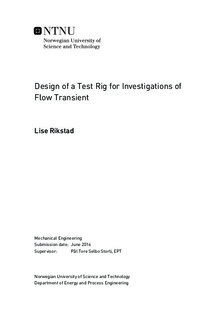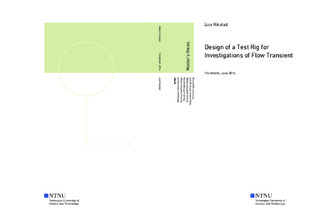| dc.description.abstract | Frictional losses during unsteady flow in the waterway of power plants are a progressing science, as the hydropower market keeps evolving to a more dynamic market. In fact, the transitional region in pipe flow is a rather unknown phenomenon. The experimental data on the topic is limited and there are no analytical solutions.
This study looks into the opportunity of establishing a test rig to study frictional losses in oscillating pipe flow, at the Water Power Laboratory at the Norwegian University of Science and Technology (NTNU). Previous work on oscillating pipe flow mainly addresses flow in U-tubes. There are only a few experimental test rigs for oscillations in horizontal pipes, which primarily generates oscillations by the use of a piston. In this thesis, a different approach applies: the shutdown of a control valve generates oscillations in a horizontal pipe between a surge shaft and a reservoir.
The study is a combination of relevant measuring techniques, laboratory considerations and applicable instrumentation to design a flexible and easy operated test rig. A review of the basic theory of transient pipe flow is the first part of this thesis. The second part presents relevant pressure transducers and connections for measuring head loss in pipe flow. Followed by measuring techniques to measure local velocities: Particle Image velocimetry, Laser Doppler Anemometer and Hot-Wire Anemometer.
An important part of the study was to consider the limitations and constraints in the Water Power Laboratory. A thorough review of the laboratory was therefore necessary. The final part presents the required apparatuses and devices to create the desired flow through the test section, including challenges and alternatives to solution.
The results describe the flow situations that are possible to obtain in The Water Power Laboratory. Followed by descriptions of recommended apparatuses and necessary instrumentations. At last an overview of measuring techniques recommended for specific fields of interest is presented. | |

